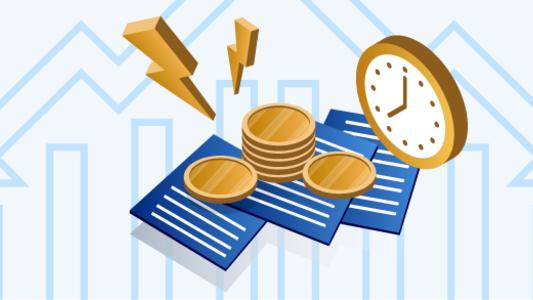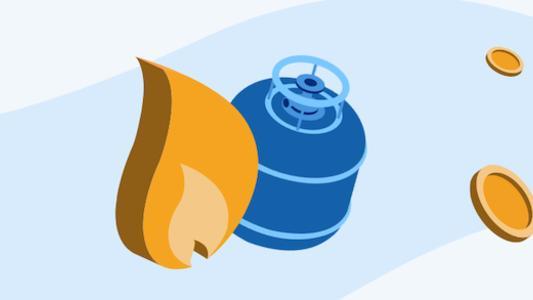Tariff Guide 2025 - Peak & Off-Peak Electricity Times
It’s been a long day at work and you’ve just come home to enjoy some Netflix & chill and perhaps also perform other (less enjoyable but nonetheless necessary) household chores. You put some load of washing, make some dinner and get ready to call it a day.
This is a fairly common scenario in most Aussies' households… and it’s likely costing you more money than it should. By understanding how peak & off-peak electricity hours work and applying some clever energy practices, you can potentially reduce your gas & electricity bill rates by 2/3 of their cost.
Which are the best times to save money on my electricity bill? You will find cheaper electricity late at night or early in the morning. These are typically off-peak hours and thus the best times to save money on your electricity bill.
What are Peak & Off-Peak Electricity Times?
(And Why Are They Important?)
Peak and Off-Peak electricity times are the time intervals during a day in which energy consumption is at its highest (peak electricity times) or at its lowest (electricity off-peak hours) and retailers will charge you accordingly. This is how it works:
Peak electricity times:
- Certain hours of the day when electricity is at its most expensive due to high demand.
This is the time of the day when the grid that provides electricity to millions of Aussies is experiencing high strain. Basically, during peak electricity hours, most people are using power-hungry electronic devices that rely on electricity (Heating, TVs, washing machines, etc.). In peak hours, retailers will increase the charges for electricity based on demand. Peak electricity times vary depending on each state but usually are between 3 pm & 9 pm on weekdays.
Off-peak electricity times:
- Certain hours of the day when electricity is at its less expensive due to low demand.
Contrary to peak electricity hours, off-peak electricity times experience significantly less demand for energy - this occurs approximately between 10 pm & 7 am, which is generally when everyone is at work, outside of their households or asleep. During off-peak electricity times, energy retailers will charge you lower rates.
Shoulder:
- The hours of the day between peak & off-peak electricity times.
Finally, shoulder times are the intervals between peak and off-peak electricity times. The energy demand sits somewhere in the middle and charge rates average between low and high prices.
Why You Should Know the Difference Between Peak & Off-Peak Choosing the right type of tariff can make a world of difference. A time of use tariff, for example, will help you save money if you use your appliances during off-peak hours, whereas a single rate tariff will be good for you if your energy habits are those of the average Aussie.
Here is a a Summary Table of Peak & Off-Peak Electricity Time Frames & Energy Demand:
| Avg. Time of Day (weekdays) | Energy Demand | Charge Rates |
|---|---|---|
| Peak time | 3 pm - 9 pm | High |
| Shoulder | 7 am - 3 pm & 9 pm - 10 pm | Medium |
| Off-Peak time | 10 pm - 7 am | Low |
If you pay for peak & off-peak electricity rates or not will depend on your electricity tariff.
These times are typical for many standard residential time-of-use plans, but exact hours may vary depending on your network distributor and electricity provider.
How to Check When Electricity Rates Are Peak and Off-Peak
Electricity usage times depend on your electricity provider, your meter type, and your specific energy plan. Not everyone is on a time-of-use tariff, but if you are, your usage will be charged differently based on the time of day.
To check your electricity rate periods:
- Look at your electricity bill to see if you're on a "time of use" tariff or a "single rate" tariff.
- If you're on a time-of-use plan, your provider should list the different rates and time periods.
- You can also contact your energy provider or log into your online account or mobile app to check your usage breakdown.
- Check your smart meter (if installed) to view time-stamped data of your electricity usage.
Before Signing Up for a Tariff
Having a proper understanding of peak & peak electricity times will help you better choose your electricity plans and tariffs.
Here is a checklist of everything you should consider before signing up for an electricity plan:
- See if your household bound to a specific tariff
- See what kind of meter you have
- Decide what electricity tariff works best for your energy use habits
- Ask the retailer what options they have available for you
- Compare the plans from various providers and study what tariffs they include
Tariff Tips Electricity is charged higher or lower depending on the time of day. This is good for some and bad for others. It's important to compare your consumption habits to the hours in the table to see when you use most of your energy. Then see if it may be better to change to a tariff that better aligns with your consumption habits.
Electricity Tariffs - Am I Paying for Peak & Off-Peak Rates?
Whether you pay for peak & off-peak electricity rates or not will depend on your electricity tariff. This is typically not something you can choose as it’s usually determined by the wiring of your home and the type of meter installed.
There are various types of electricity tariffs in Australia. These are the most common:
- Single rate tariff
- Time of use tariff
- Controlled load tariff
- Demand tariffs
If you have the option to choose one of the different electricity tariffs you want to pay is a decision you need to make carefully, as every person’s energy use is different and going for a particular tariff that does not properly align with your electricity use will potentially cost you a lot of money.
NOTE: Some tariffs will require you to have a particular type of meter installed or ask you to install a smart meter. When comparing electricity plans, always remember to ask your provider what type of meter the plan needs.
Types of Electricity Tariffs - Which tariff is best for you?
Deciding what tariff works best for you is ultimately up to your energy consumption habits and needs. Let’s explore each electricity tariff a bit deeper and go over their advantages & disadvantages:
Single Rate Tariffs
Single rate tariffs do not consider peak & off-peak electricity times. With a single-rate electricity tariff, you get charged the same amount of money regardless of when you use your appliances. Single rate electricity tariffs are by far the most popular choice for Australians as they are often the most convenient. You will also sometimes hear them referred to as peak, demand, standard or flat rate electricity tariffs.
A single rate tariff is good for you if:
- You follow the average working schedule, use your appliances during peak times and switch them off during off-peak hours.
- Your energy usage is consistent throughout the day.
- You're home during peak times and rely on heating or cooling.
- You don't want to monitor or shift your usage habits.
Time of Use Tariffs
Time of Use tariffs do just as the name suggests - they charge you differently depending on what time of the day you consume electricity. Here is where peak and off-peak times come into play. If you use your appliances & other power-hungry devices during peak hours, retailers will charge you significantly more than with a single rate tariff. On the other hand, consuming energy during off-peak hours will help you save big money.
A Time use tariff is good for you if:
- Your schedule is flexible enough to allow you to use your appliances during off-peak electricity times and turn them off during peak electricity hours.
- You mostly use electricity late at night or early in the morning.
- You can delay high-usage activities like laundry or EV charging to off-peak hours.
- You want to take advantage of smart home technology to automate usage.
Controlled load tariff
Controlled load electricity tariffs charge the use of large, high-energy appliances that are metered separately from the rest. Some examples of these appliances would include hot water systems, underfloor-heating or pool pumps. These tariffs are great for managing power-hungry systems without having your bill price go off the roof, but the electricity will only be supplied to these appliances for a limited number of hours daily.
A controlled load tariff is good for you if:
- You have large, power-hungry appliances in your household and use them at the same time every day.
Demand Tariffs
Demand tariffs include both the standard electricity usage plus an extra fee - the “demand” or “capacity” charge. This demand charge is calculated by measuring the maximum energy consumption of all the household appliances at a given period and then added to the standard electricity usage rates. It encourages low-intensity energy use and is typically used in businesses, but lately also in residential households.
A demand tariff is good for you if:
- You are very conservative with your electricity use. These tariffs usually have significantly lower standard electricity rates.
AGL Peak and Off-Peak Electricity Times
AGL customers with a smart meter on a time-of-use plan can expect the following timeframes for electricity usage in most areas:
- Peak: 3:00pm to 9:00pm (Monday to Friday)
- Shoulder: 7:00am to 3:00pm and 9:00pm to 10:00pm (Monday to Friday)
- Off-Peak: 10:00pm to 7:00am (every day)
Note: These times are typically for customers in NSW, VIC, SA, and QLD, but the exact timing may vary based on your location and distributor.
AGL plans often include time-of-use pricing if you have a smart meter, and they provide usage breakdowns through the AGL app.
EnergyAustralia Peak and Off-Peak Electricity Times
EnergyAustralia offers time-of-use tariffs to customers with compatible meters. Typical times include:
- Peak: 2:00pm to 8:00pm (weekdays)
- Shoulder: 7:00am to 2:00pm and 8:00pm to 10:00pm
- Off-Peak: 10:00pm to 7:00am
These timeframes may vary depending on the state and network provider. You can view your rate breakdown by logging into your EnergyAustralia online account.
Origin Peak and Off-Peak Electricity Times
Origin Energy also offers time-of-use pricing for customers with a smart meter. Standard usage periods are:
- Peak: 3:00pm to 9:00pm (weekdays)
- Shoulder: 7:00am to 3:00pm and 9:00pm to 10:00pm
- Off-Peak: 10:00pm to 7:00am
In some states, such as Victoria or Queensland, Origin may also offer different structures based on the local distributor.
You can access your usage reports and time periods through the Origin Energy app or online portal.
Peak & Off-Peak Times By State
NSW
Peak: 2pm to 8pm
Shoulder: 7am to 2pm & 8pm to 10pm
Off-Peak: 10pm to 7am
QLD
Peak: 4pm to 8pm
Shoulder: 7am to 4pm & 8pm to 10pm
Off-Peak: 10pm to 7am
VIC
Peak: 3pm to 9pm
Shoulder: 7am to 3pm & 9pm to 10pm
Off-Peak: 12am to 7am & 10pm to 12pm
SA
Peak: 12am to 1am, 6am to 10am & 3pm to 12am
Shoulder: 10am to 3pm
Off-Peak: 1am to 6am
More about Billing

Reduce Your Electric Bill - 10 Reasons Why Your Bill is High

What's the Average Gas Bill in Australia?

What's the Average Electricity Bill in Australia?
Click below to find a better deal for your home!
Why Do Peak and Off-Peak Energy Rates Matter?
Understanding peak and off-peak electricity times can lead to significant savings—especially if you're able to shift usage to cheaper periods. Each energy provider and state may define these times differently, so it's important to check your specific plan details.
If you're unsure which pricing structure works best for you, compare your usage patterns and try contacting your provider to see if you're on the most suitable tariff. You might even consider using a comparison site to see what other retailers offer in your area.
Frequently Asked Questions – Electricity Peak & Off-Peak Times
What are peak and off-peak electricity times?
Peak electricity times are periods during the day when electricity demand is highest, typically late afternoon to early evening, making electricity more expensive. Off-peak times occur when demand is low, usually overnight, resulting in cheaper electricity rates.
What are shoulder periods?
Shoulder periods are the transitional times between peak and off-peak hours. Electricity rates during these times are generally moderate, reflecting medium demand.
When are typical electricity peak and off-peak times in Australia?
| Period | Typical Time (Weekdays) | Demand |
|---|---|---|
| Peak | 3 pm – 9 pm | High |
| Shoulder | 7 am – 3 pm and 9 pm – 10 pm | Medium |
| Off-Peak | 10 pm – 7 am | Low |
Note: Exact times vary by state and provider.
How do peak and off-peak times affect my electricity bill?
Electricity used during peak times typically costs significantly more than off-peak. By shifting high-usage tasks like laundry or charging devices to off-peak hours, you can greatly reduce your bill.
What types of electricity tariffs are available?
- Single-rate tariff: Same rate regardless of time; simple but might cost more if you use lots during peak.
- Time-of-use tariff: Different rates for peak, shoulder, and off-peak times; encourages shifting usage.
- Controlled load tariff: For large appliances like hot water systems; operates during designated times at lower rates.
- Demand tariff: Charges based on peak consumption during a measuring period; common in businesses.
Which tariff suits me best?
If your energy use aligns with typical daylight hours, a single-rate tariff may be best. If you can shift usage to off-peak hours or use smart appliances, a time-of-use tariff can save money. Controlled load suits homes with managed high-consumption appliances. Demand tariffs suit energy-conscious users with steady or low peak demand.
What are the specific peak/off-peak times by state?
| State | Peak | Shoulder | Off-Peak |
|---|---|---|---|
| NSW | 2 pm – 8 pm | 7 am – 2 pm, 8 pm – 10 pm | 10 pm – 7 am |
| QLD | 4 pm – 8 pm | 7 am – 4 pm, 8 pm – 10 pm | 10 pm – 7 am |
| VIC | 3 pm – 9 pm | 7 am – 3 pm, 9 pm – 12 am | 12 am – 7 am, 10 pm – 12 am |
| SA | 12 am – 1 am, 6 am – 10 am, 3 pm – 12 am | 10 am – 3 pm | 1 am – 6 am |
How can I find out my specific peak and off-peak times?
- Check your electricity bill for tariff type and rates.
- Log in to your provider’s online portal or app for usage details.
- Contact your energy provider’s customer service.
- Review your meter type; smart meters provide time-stamped data.
If you don’t have a smart meter, you might be limited to single-rate tariffs.
Tips for saving electricity costs
- Run high-energy appliances like dishwashers and washing machines during off-peak hours.
- Use smart home devices to automate energy use based on tariff times.
- Consider switching to plans with tariffs that best match your lifestyle.
